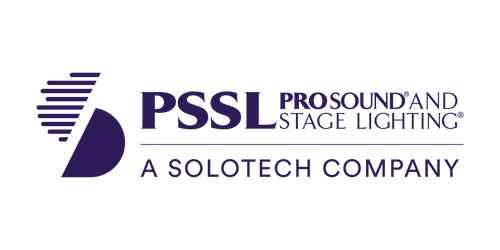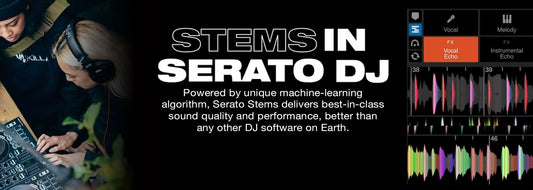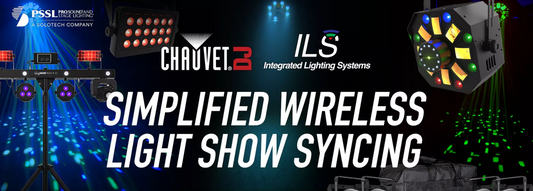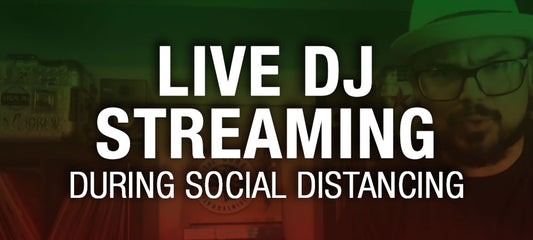Digital Mixers 101
As long as pro audio has existed, mixers have been around as a means of bringing sonic components together, from simple volume control to dynamics processing and time-based effects. Fast forward to the digital age and we now have digital mixers with capabilities that far exceed the boards of yesteryear. For some, these boards are overwhelming. For others, they simply don't know why they would opt for these fancy new consoles over a traditional analog board. Well, if you've ever found yourself part of either of these camps and would like to learn more about digital mixers, you're in the right place!
Drawbacks of Going Digital
If you inexplicably started hearing crickets right now, it’s because there’s not much to say in argument against digital mixers. There are, however, two common concerns that arise when it comes to going digital, and neither should be a major deterrent:
It’s (Not) Over Your Head
The first concern is that digital mixing boards are too complicated for the average user. While it is true that there is a unique learning curve for each digital board on the market, the notion that they are somehow above what a normal person can grasp is a complete misconception. The basics of a mixer don’t change in the digital world, and generally, any advanced options not mapped to buttons and knobs on the board to start are easily accessible using the mixer’s touch screen. In a world where there are more phones than people and a majority of those phones are smart phones, touch screens aren’t something to fear.

I’d liken it to driving a new car for the first time: you may be a bit confused on how to do things like activate the windshield wipers or turn on your headlights at first but once you learn the nuances of the vehicle, it’s not much different than operating your last car. The same can be said of learning things like bussing and activating effects on a digital board; the processes are slightly different but the concepts are all the same. You will, of course, need to spend some time getting used to your new board but once you do, I can assure you it’ll be worth the effort!
Big Investment, Bigger Return
The second concern revolves around the cost of the investment. In general, digital mixing boards have a heftier price tag than their analog counterparts, and when you think about all the additional components they require, this makes sense. However, the greater investment doesn’t just stem from all the pretty lights and screens. Digital mixers didn’t arise out of the need for a more aesthetically pleasing interface or because analog mixers couldn’t implement outboard dynamics processors and effects, but rather to circumvent having to buy and transport all those outboard units to begin with. Top notch EQs, compressors, filters, and FX processors are standard on every channel of most digital mixers, and buying outboard versions of these processors for every channel on an analog board would easily surpass the cost of a comparable digital board several times over.
On top of this, recalling mixes is a breeze and smartphone/tablet control opens up an entirely new way of mixing. You can walk around the venue making changes or even mix the show right in the middle of the audience! Control and flexibility have never been as extensive in live sound, and if there’s anything a good sound engineer loves, it is control and flexibility with the mix. The value you get from investing in a digital mixer is arguably second to none.

Advantages of Going Digital
There are quite a few, but to put it simply:
- Instantly save and recall mixes and presets
- This is a HUGE benefit that can get you up and running in a familiar venue or circumstance immediately rather than having to rely on a written guide or pictures to restore your session to its original settings, which can be very time consuming. This feature alone could justify replacing your old board in many cases.
- Many boards even allow you to save your mixes to a USB drive for easy transfer
- Option to mix using a tablet and/or smartphone on most digital consoles
- Is the familiar user interface of a tablet or smartphone an advantage for your operators?
- Would you like to be able to walk around the space while hearing and adjusting the mix remotely?
- Built-in signal processing and effects
- Typically far more processor/effect options than those built into analog boards
- Digital processing means you aren’t limited by the number of physical inputs. Want to use a particular EQ on each channel? Go for it!
- Smaller footprint
- Multi-function buttons and knobs mean less are needed
- No outboard gear necessary – processors built in
- Digital snakes run through ultra-thin CAT5 or CAT6 cables as opposed to thick copper wire

How Do I Pick One?
Once you’ve made the decision to get a digital mixer, you’ll need to figure out which of the many options you want to go with. When narrowing down your search, use these questions to help guide you in the right direction:
- How many channels do you need? – To start with, it’s important to consider how the board will be used and adjust accordingly. All mixers start with a set number of inputs and outputs. Depending on the digital mixer you go with, you may even be able to expand the total number of ins and outs later down the road. You’ll want to get a mixer that provides enough channels for your typical usage, maybe a few extra, but nothing far above what you foresee the mixer being used for. For example, if you are a singer-songwriter, you probably won’t need as many channels as someone getting a board for a ska band or house of worship.
- How much are you willing to invest? – A mixer is the heart of your audio setup, with everything running into it or out of it at some point. As such, you don’t want to pinch pennies too tightly and lose functionality or features that are crucial to the particular needs of your application. Lay out a general estimate of what you would be able to afford, then compare it to the features that you need and the features that you are willing to go without.
- What are those features you can’t do without? – This could be a major change in functionality or just a nice little addition that is especially important to your workflow in particular. Whether it’s flying faders, scribble strips, or something else entirely, figure out the features you’re set on and weed out any mixer that doesn’t have them.
- How easy is it to operate? – As mentioned above, digital mixers do have a bit of a learning curve. This curve varies, and depending on your circumstances, you may need to get something with the smallest curve possible even if that means giving up features. Venues that have a set group of engineers shouldn’t have any problem with the learning curve, but houses of worship that have a different volunteer running the board every week should opt to keep everything as basic as possible.
Conclusion
Analog mixers are still a viable option for running sound but when your old board gives out on you or you are simply ready to invest in a more efficient console, digital mixers are the way to go. PSSL’s Gear Advisors are here to help, so if you have any questions about digital mixing boards or you’re thinking about getting your hands on one, give us a call at 1-800-268-5520 today!




